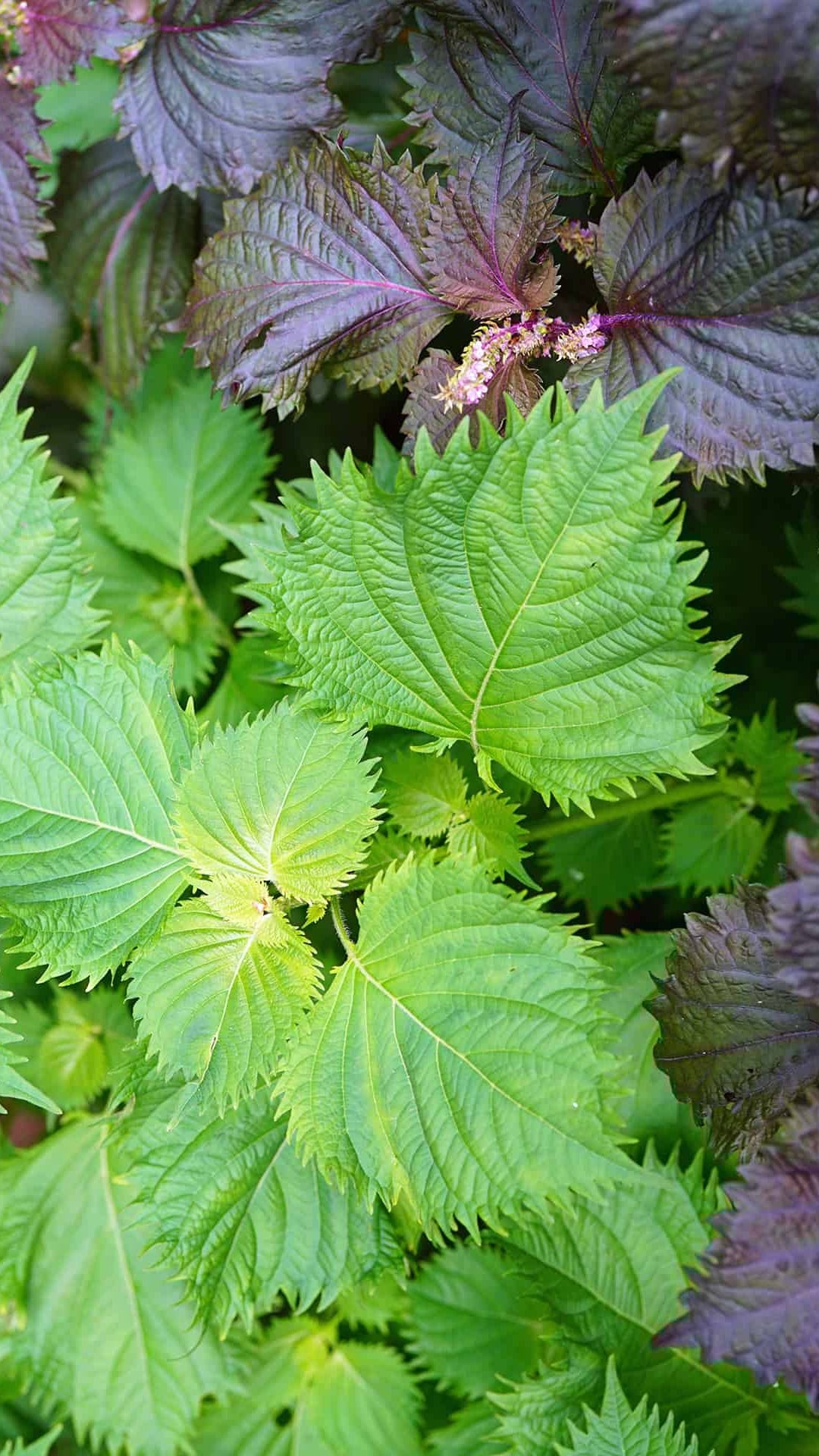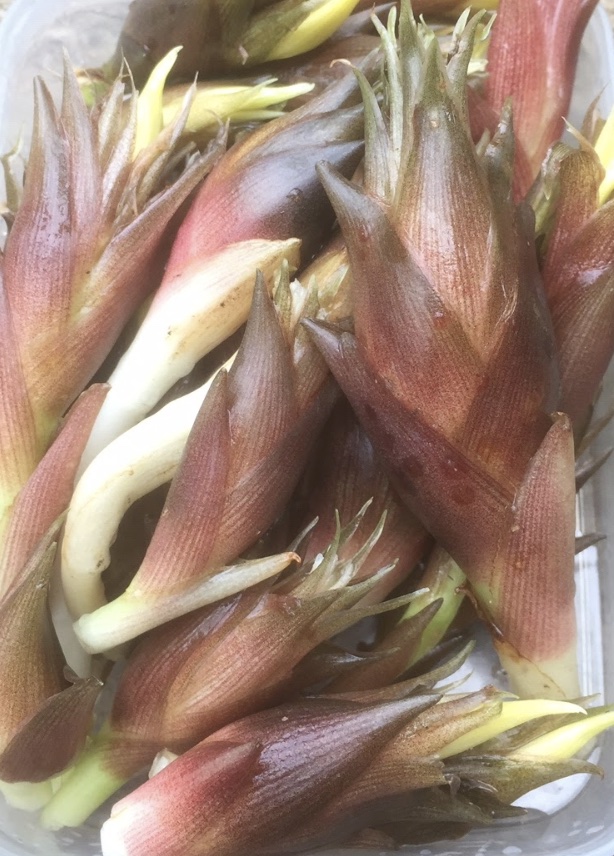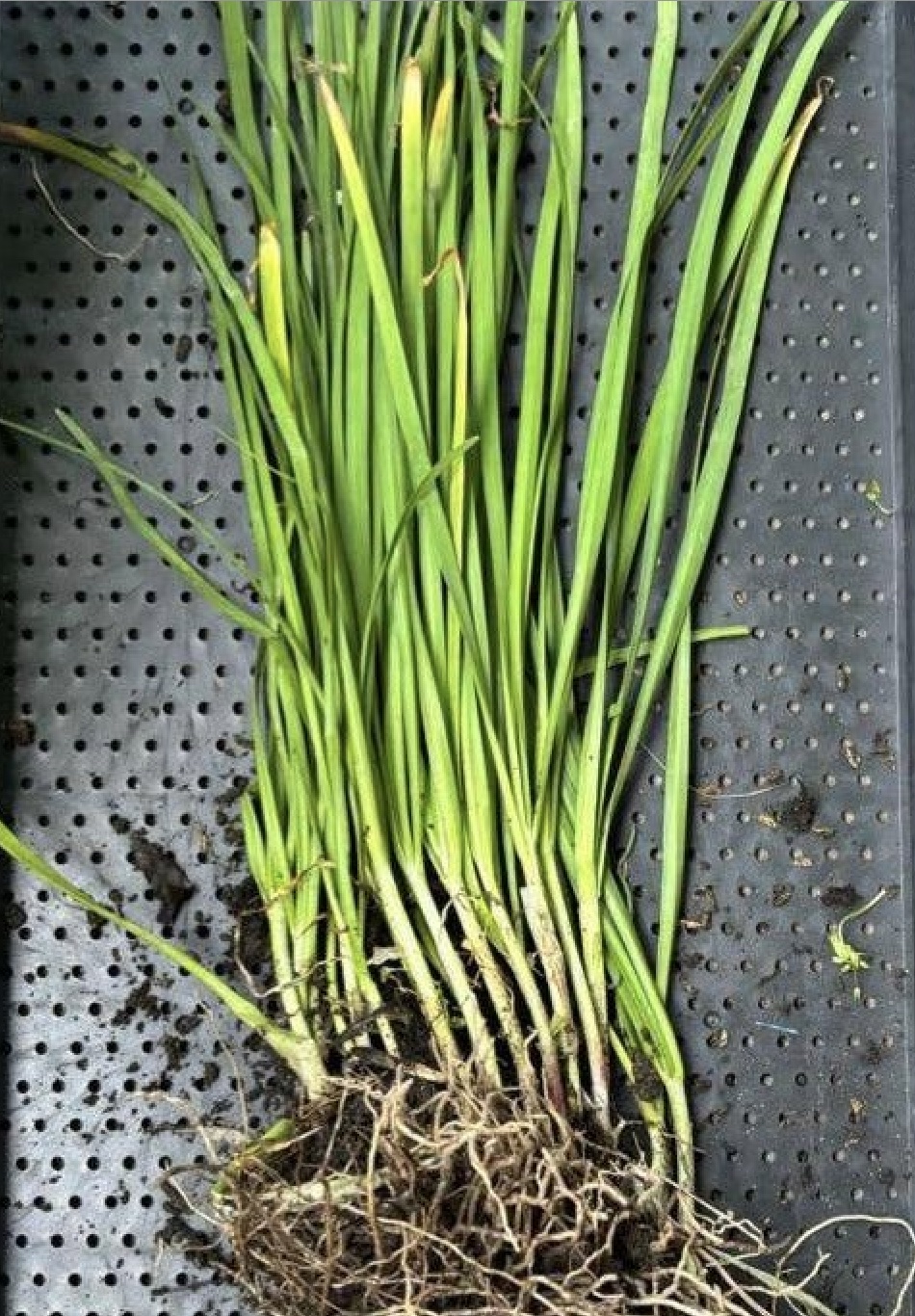Explore the Beauty of Japanese Flora
Japanese Plants for Your Home Garden
Unique Japanese Plant Features

SHISO (perilla frutescens var crispa)
Mint family. Green and Red are edible, both leaves and flowers. Red shiso can be planted in full sun, the green ones prefer half shade. [Note: Korean Shiso is a different variety (non-crispa) and has smoother broader leaves with a different flavor profile (slightly bitter).]
Health benefits and nutritional values of shiso:
- Beta-Carotene is equal to carrots, thus good for eyes
- Vitamin E: antioxidant, anti-aging effects
- Vitamin K: stop bleeding, bone formation, intestinal bacteria
- Vitamin B and Folic Acid: necessary for making blood cells, pregnant women need twice as much as normal people. No need to worry about overdose, the body eliminates any excess.
- Vitamin C: contains half the Vitamin C in lemon juice. Vitamin C is necessary to produce collagen, help the function of white blood cells, boost immunity, prevents allergies and cold
- Shiso paste helps to ease nausea and morning sickness
How to prepare and eat shiso leaves:
- Salads: The leaves, both green and red are used like lettuce in salads, sandwiches, pickles, tempura, furikake, wrapping onigiri, juice, and so on. Also very popular to garnish sashimi and topping for noodle soups.
- Furikake: microwave or bake the leaves, make crumbles inside plastic bag, remove into a bowl and add sesame oil, sesame seeds, soy sauce and pinch of salt. Shiso seeds can also be added.
- Rice with shiso and baked salmon: chop shiso leaves and baked salmon piece, mix with cooked rice.
- Pickled shiso flowers: wash the flowers well, soak in water about 5 hrs, drain water and dry using paper towel. In a boiled bottle put the flowers, add soy sauce and keep refrigerated; use up in about a month.
- Cucumber salad: cut cucumber in small half moons, add minced garlic, soy sauce and chopped shiso.
- Shiso juice: boil 400ml of water, add about 30gr of shiso leaves and boil for 15 minutes. Remove the leaves. Add sugar while hot if using some. When cold, add juice of half a lemon or more. Keep refrigerated in sterilized bottle up to 1 year. Serve 1/3 of the juice mixed with 2/3 of water – hot or cold.
- Marinated leaves: prepare a sauce: sesame seeds, soy sauce, sesame oil, minced garlic and water. Marinate the used shiso leaves for juice in this sauce. Serve as toppings for rice, noodles, onigiri, salads, pizza, pasta, sandwiches.

MYOGA (zinziber myoga)
Known as myoga ginger or Japanese ginger. Plant in partial shade, use compost and mulch to enrich the soil. Can be planted in a container in balconies.
Health benefits and nutritional values of myoga:
- Same as ginger, good for cold and flu.
- Contains potassium, Vitamins B1, B2 and B6, E and K, also Iron, Manganese and Calcium.
- Anti-inflammatory effect, helps improve blood circulation, anti-bacterial and sedative effects
- It warms the body.
- Appetite enhancement – good for people who lose appetite in summer.
- Improves concentration.
- Rich in dietary fiber, aiding in efficient digestion, immune system.
- Best eaten raw because when cooked in high temperature it may lose some effects.
How to prepare and eat myoga:
- Chop myoga and soak in water for few minutes to avoid stomach upset in some people.
- Make tea with honey, soups, tempura, stir fry, sliced for garnish, salads, pickled in miso paste, etc.
- Pickled myoga: for about 10 myoga’s, boil 100ml vinegar, 5 tsp sugar and pinch of salt. Boil myoga quickly and mix with the sauce. 2 mos. refrigerated or 6 mos. in sterilized jar.
- Meat wrapped myoga: cut myoga lengthwise into quarters; spread thinly sliced pork or beef, shake with flour, salt and pepper; wrap myoga piece and cook in oiled frying pan; serve with lemon juice.
- Cook rice with chopped abura-age (fried tofu), soy sauce and sake. Add chopped myoga after the rice is done, mix and serve.
- Freeze – cut into thin slices, store in freezer bags.

NIRA (allium tuberosum)
Japanese chive of onion family. Perennial, very easy to grow, even in pots, sun or shade. Keep growing after you cut them. The pretty white flowers, also edible, attract bees and butterflies.
Health benefits and nutritional values of nira:
- Vitamins A, C, K.
- Protect from lung and oral cavity cancers.
- Potassium, Calcium, Magnesium, Beta-Carotene and Lutein.
- Seeds contain medicinal values to protect kidney, liver and urinary problems.
- Longevity and disease-free lives.
- Eaten in Japan since ancient times, originally for its medicinal properties.
How to prepare and eat nira:
- Nira sauce: To prepare the sauce – 2 tbsp soy sauce, 1tbsp vinegar, 1 tbsp sugar, 1tsp sesame oil; mix with cut nira and serve with any meat.
- Nira tama: Cut nira and cook with little oil in a wok. Remove and mix with beaten eggs. Return to wok and cook until the eggs are softly set.
- Gyoza dumpling: Mix chopped nira with other ingredients and make the dumplings. Can be fried, steamed or in soups.
- Nira pancake: Mix chopped nira in pancake mix without the sugar and make pancakes. Serve with a sauce made with vinegar and soy sauce.
- Salted nira: Cut 100 g nira 3 cm wide, grated garlic, half tsp salt, 1tsp lemon juice,1 tbsp sesame oil and black pepper. Keep refrigerated and start serving after one night, on top of rice, salad, ramen or onigiri.
- Can be dried and stored in air-sealed container in cool, dark place, the same as mint leaves. Can also be frozen.
- Mostly used for flavoring and garnishing, especially in the French and Mediterranean cuisines: pizza, quiche, salad, omelets, soup and biscuits.
Join Our Community of Japanese Plant Enthusiasts
Toronto Japanese Garden Club (TJCG) members are interested in the relationship of Japanese culture to nature.
As a member you will be the first to know about workshops with experts, and receive updates about special events with our club and partners.
No previous gardening experience is necessary!
